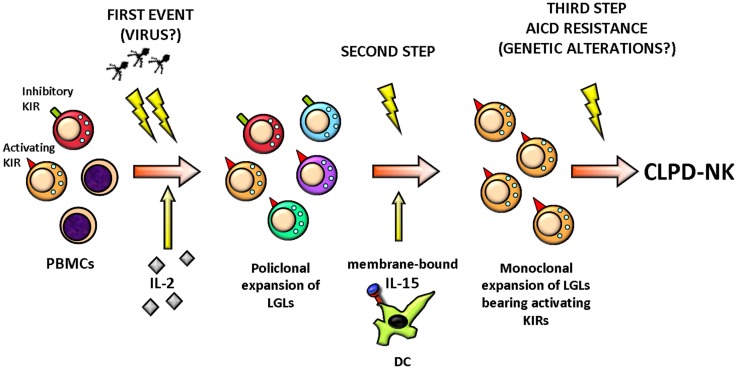Figure 2.
Hypothetical pathogenic events leading to CLPD-NK. A stimulation by exogenous antigen(s), such as virus, represents the initial stimulus inducing the activation and clonal expansion of NK cells, selecting preferentially NK cells equipped with activating KIR, probably because these NK cells are more responsive. LGL expansion at the beginning could be polyclonal but then it becomes monoclonal and chronic, sustained by the action of cytokines, like IL-2 and IL-15. Finally, the clonal LGL expansion does not encounter a resolution for a third event establishing the activation induced cell death (AICD) resistance, probably due to a genetic alteration. All these events result in LGL aberrant outliving and number increase. PBMCs, peripheral blood mononuclear cells; KIR, killer immunoglobulin-like receptor; LGLs, large granular lymphocytes; DC, dendritic cell; AICD, activation induced cell death; CLPD-NK, chronic lymphoproliferative disease of natural killer cells.

